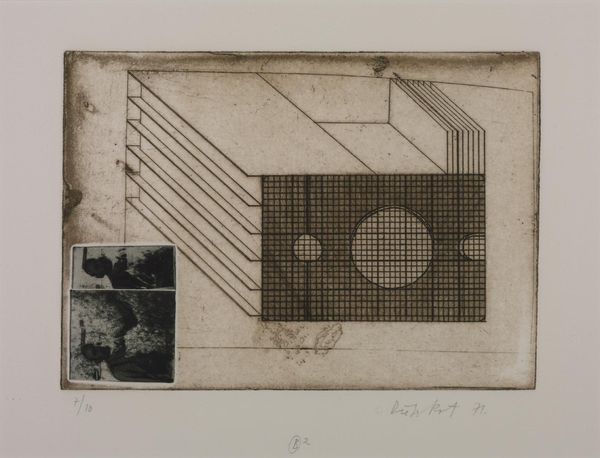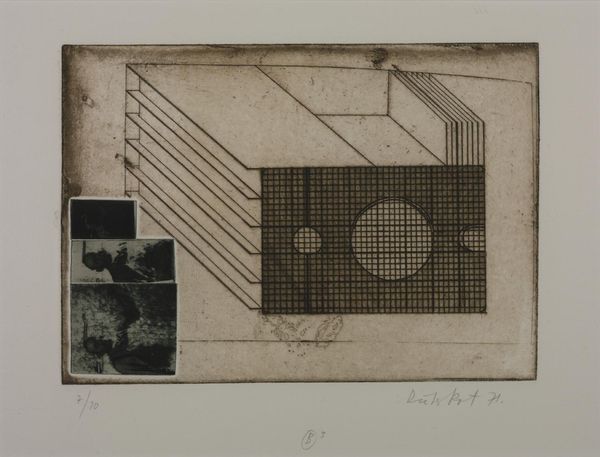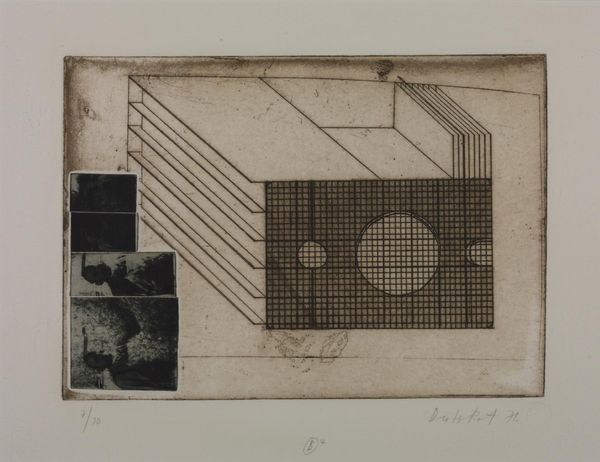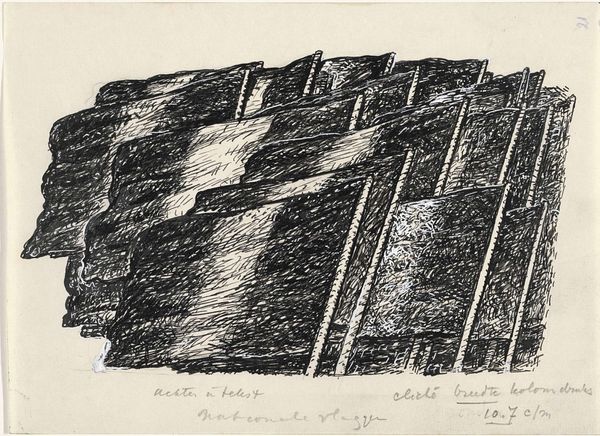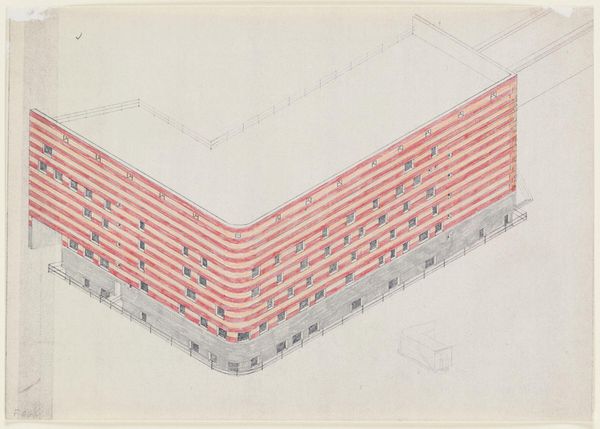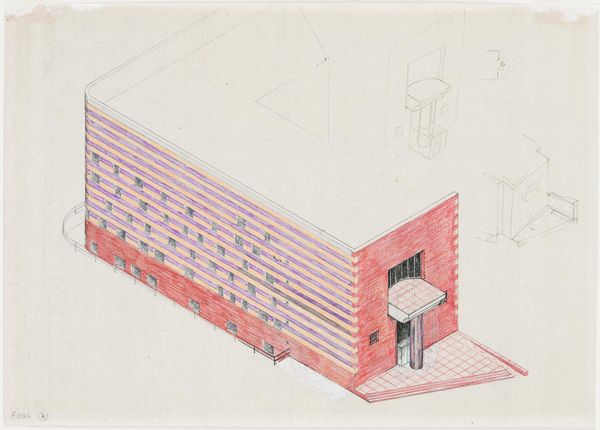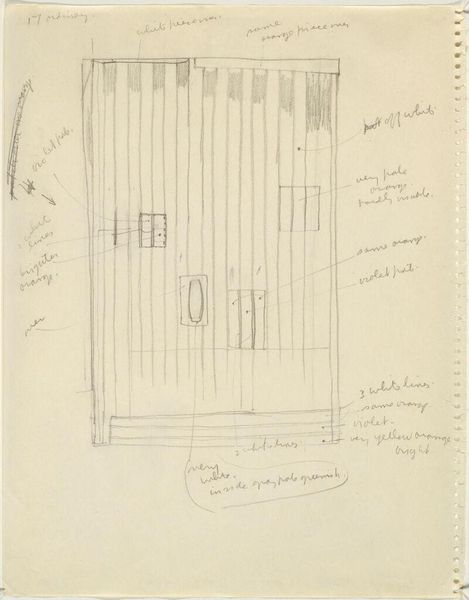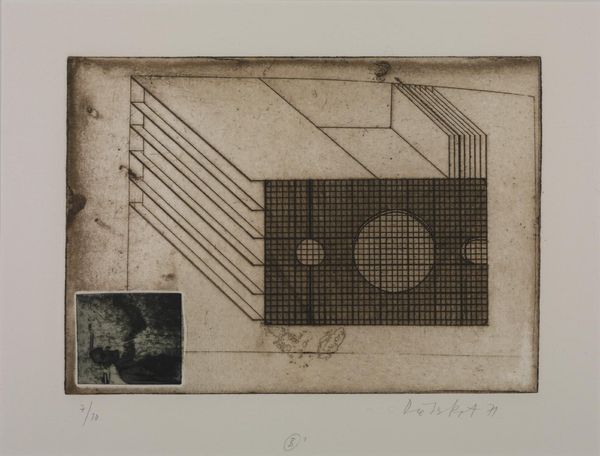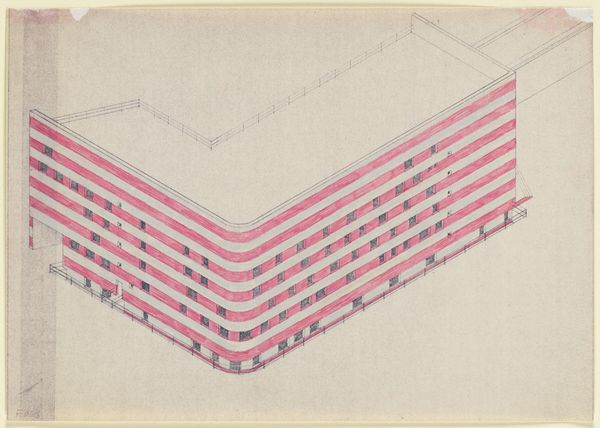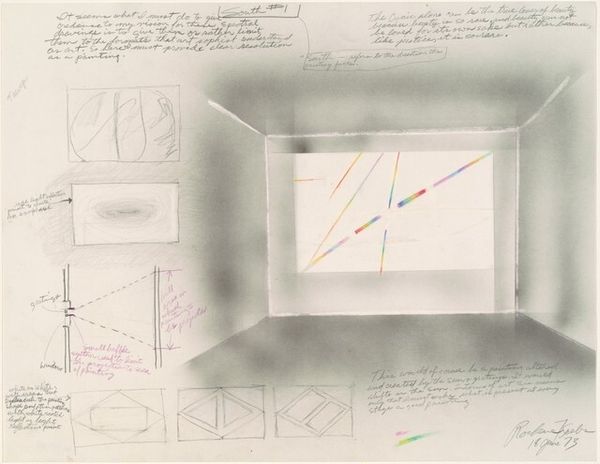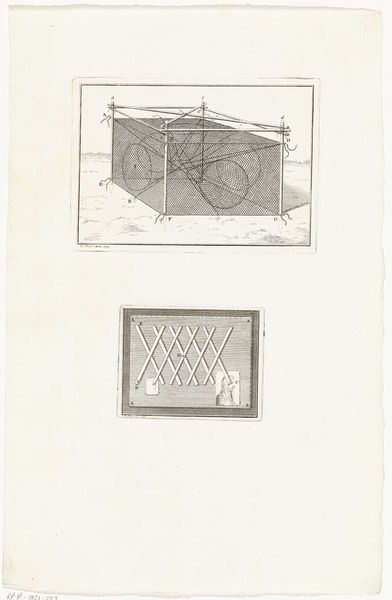
Otterlo Mastaba, Project for the Rijksmuseum, Kröller-Müller, Otterlo 1975
0:00
0:00
drawing, paper, pencil, site-specific, installation-art
#
drawing
#
conceptual-art
#
paper
#
geometric
#
pencil
#
site-specific
#
installation-art
#
nouveau-réalisme
#
modernism
Dimensions: sheet: 43.18 × 60.96 cm (17 × 24 in.)
Copyright: National Gallery of Art: CC0 1.0
Editor: We’re looking at "Otterlo Mastaba, Project for the Rijksmuseum, Kröller-Müller, Otterlo," a drawing on paper by Christo from 1975. The bold, orange and yellow geometric form really pops against the muted grey landscape. What do you see in this piece, from your perspective? Curator: As a historian, I see this drawing as more than just a preparatory sketch; it's a document revealing the complex interplay between artistic vision, institutional structures, and the very public spaces art occupies. Christo's proposal directly engages with the historical symbolism of the mastaba, an ancient Egyptian tomb, transplanting it into the modern museum landscape. Do you think that shift impacts our understanding of the form? Editor: Definitely. The mastaba originally signified permanence and burial, but here, as a proposal, it seems more about temporality and potential. It makes me consider how institutions shape our engagement with monumental forms. Curator: Precisely! And this 'wrapping' concept, which Christo is famous for, takes on added resonance within the context of the museum. What’s being veiled or revealed here, if anything? The institution? The artwork itself? Consider that. The artwork’s visibility is at play, forcing us to contemplate the artwork and the context it sits in. Editor: I see what you mean. I had been looking at it as an architectural proposal and nothing else, but its public facing elements are key, along with how museums impact the art and viewers around them. Curator: It's a reminder that art exists not in a vacuum, but within a web of cultural and socio-political forces. The very act of proposing this monument challenges the perceived authority and conventions within the museum space, questioning their influence. Editor: So, it's not just about what we see, but about the dialogue it creates within and about the space it’s designed to inhabit. I'll keep that in mind. Curator: Exactly. This piece invites us to look critically at the stage upon which art performs.
Comments
No comments
Be the first to comment and join the conversation on the ultimate creative platform.
